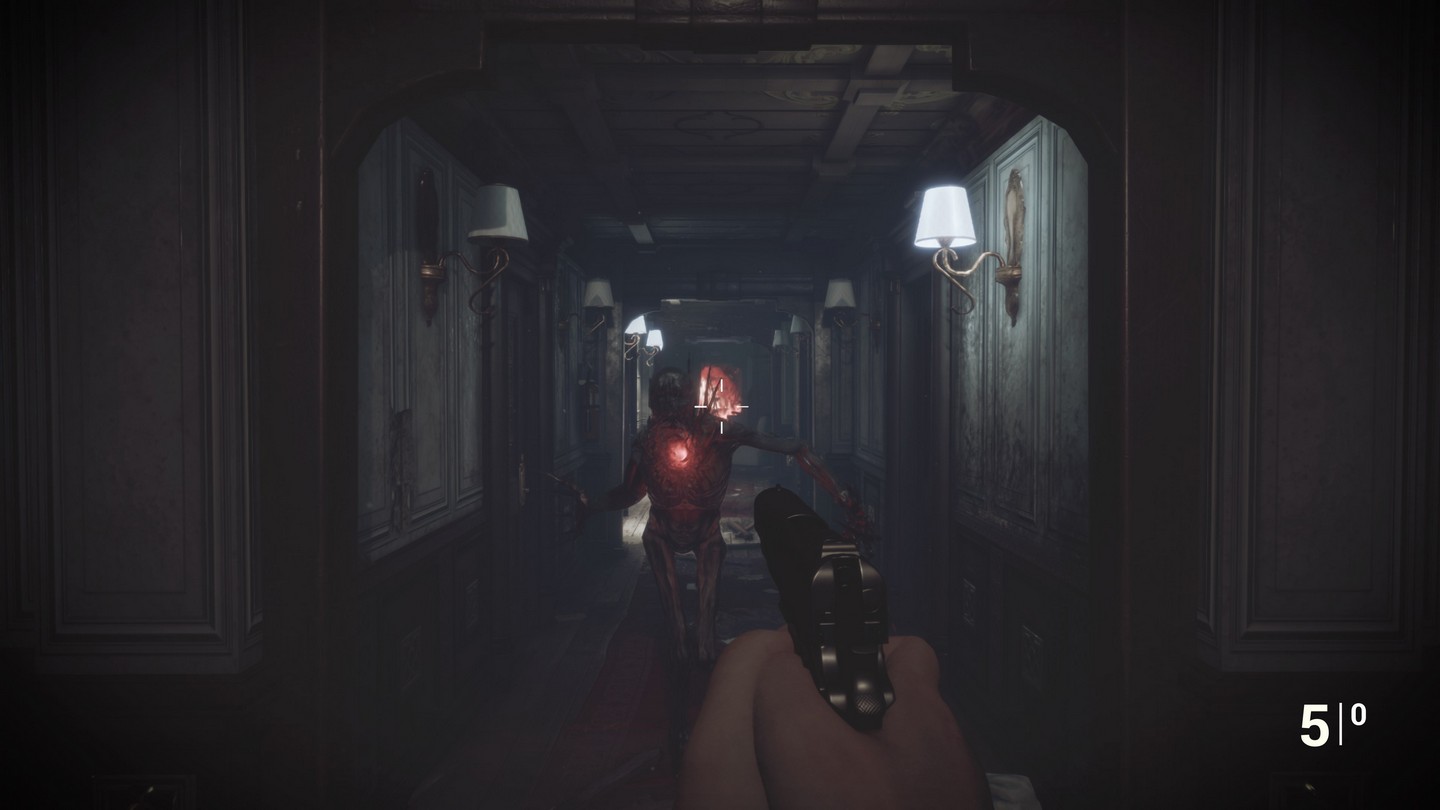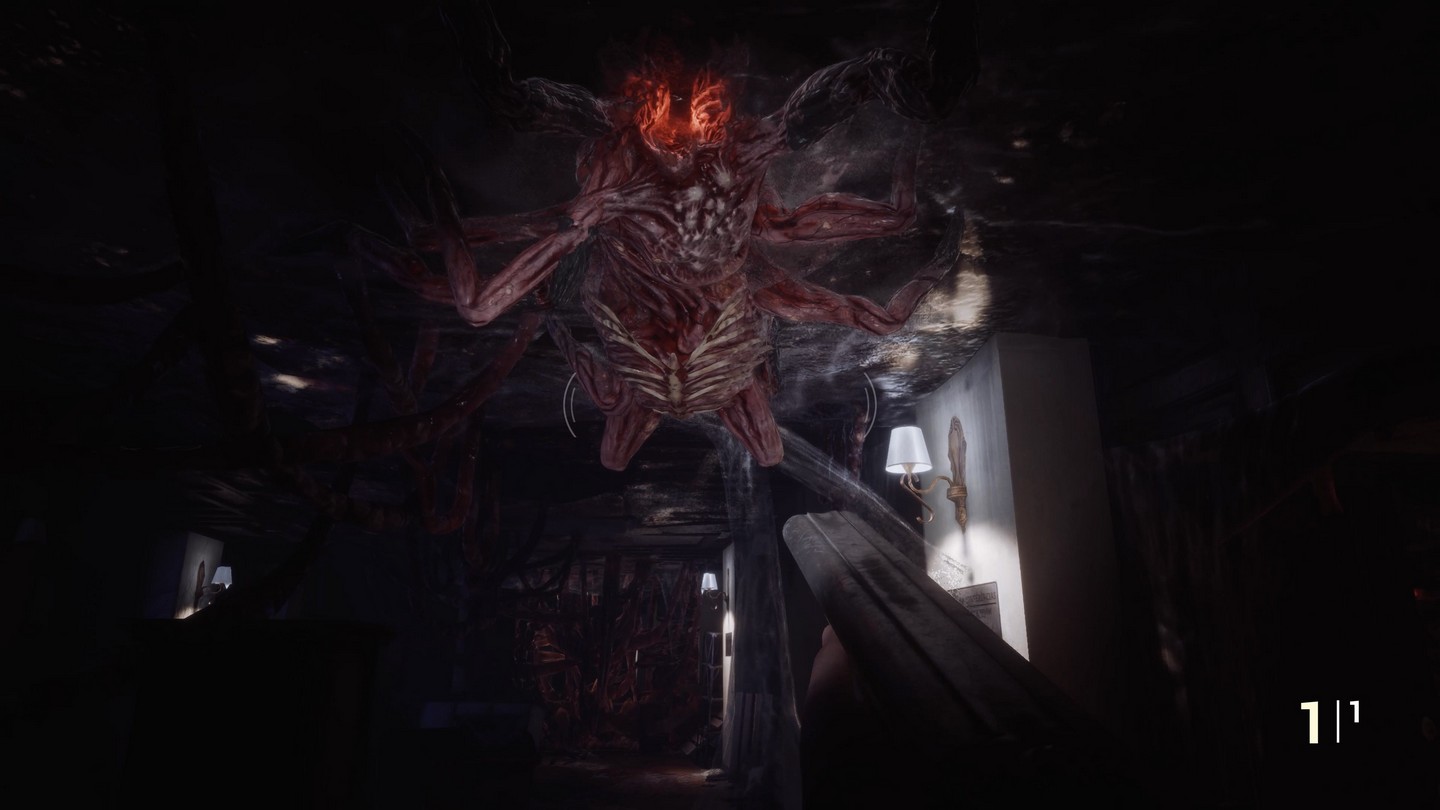IF ONLY ALL DEBUTS WERE THIS STRONG.
Fobia: St. Dinfna Hotel (no, don’t ask me how to pronounce that) is a first person horror game and quite frankly that’s generally a bad thing nowadays. How many jump scare filled romps through barely visible hallways exist on Steam alone? I had my doubts going into Fobia that it would be good and that I would end up slogging through a miserable experience that fails to understand what makes a good horror game. I mean this is the debut game from Pulsatrix Studios so who can blame me for having preconceived notions?
I can. Past me was wrong and sucks. Current me loves this game and is right in saying that Fobia is a really great first outing for Pulsatrix and players.

PLATFORMS: XB1, XSX, PS4, PS5, PC
MSRP: $29.99
PRICE I’D PAY: $29.99
So how does it play? For the most part Fobia is a first person horror game with minimal combat, heavy exploration, and puzzle elements. The developers clearly have a love for the classics of Resident Evil and Silent Hill because St. Dinfna Hotel feels like a very real place occupying real space, meaning I learned the floorplan into memory (an essential aspect) and it rarely felt like a video game which is helped by the fact that puzzles feel like organic parts of the environment and that nearly every drawer and cabinet can be open and searched for items and notes. This natural exponential feeling of exploring the environment gives that same sense of satisfaction as one can get from games described as “metroidvanias” and I think a lot of people who enjoy those types of games will also find a lot to love in Fobia. I discovered a chess piece after solving a puzzle and clearly knew where to use the chess piece to progress because I remembered the floor plan which is very similar to remembering where the missile blocks are in a Metroid game. Puzzles that are essential for progression are generally challenging but not terribly difficult while optional puzzles can be real brain busters. I clearly looked at some puzzles and didn’t even see that they were puzzles as my clear percentage when I was done was something like 23% of all optional puzzles completed. Some puzzles I just didn’t know how to solve. There are safes I never figured out the combinations to and rooms that still remain locked. I like that this didn’t stop me from completing this game.
BUT HOW ABOUT THAT COMBAT?! The combat is okay. While the exploration and puzzles are fantastic and I don’t want to spoil that stuff (my only hints being that observation is king and read the notes), combat is nothing special. Unfortunately combat is strictly gun based and guns require ammo and that puts Fobia into a strange place; without a melee weapon what does the player do when ammo runs out? I think Pulsatrix Studios’ answer was to inundate the player with so much ammo (mainly pistol ammo) that the likelihood of running out is next to none. By no means was the pistol a great weapon but it was serviceable throughout the entire game which sort of removes some tension when I can attack enemies from afar. Forcing me to melee or entirely avoid enemies when ammo is low would have maybe helped feel a bit more scary at times but I’ll touch upon the atmosphere later. I do wonder how bosses are handled however, because if I were to have run out of ammo because I wasn’t searching heavily, how would the game respond because Silent Hill had a safety switch built into some bosses for that very reason which would kill the boss after a set amount of time if the player had no way of attacking the boss. Maybe they just give the player extra ammo? I don’t know and I feel that it is important if I am recommending this game to warn players that this could potentially lead to a fail state.

It is also important to note that outside of bosses there are only two enemy designs: a zombie-like creature and a spider-like creature. The zombie-like creature acts as expected and is generally used effectively with the developers placing encounters with them in such a way that they feel surprising without being jump scares and making the player feel on edge. The spider-like enemies can die in a fire though as they jump out and scare the crap out of me constantly. The developers did a good job with the sound design because I could usually hear them before they would jump out and take a chunk of health. I had a difficult time seeing them and shooting things that are small and in the dark isn’t the most fun experience, but hey they gave me a good laugh when they would startle me so I guess they did the job well. It is however a shame that this is it for common enemies because even in the later portions of the game are still these two enemies which is why I say that combat is sort of minimal. Sure there are boss fights, but for the most part combat in Fobia is treated like enemies in Mario Bros.: It is a simple obstacle for the player to overcome. They also help show where players should go or haven’t been. I overall didn’t mind combat, but it could be improved in Pulsatrix’s future games.
But how does this function in a story? Well, the story isn’t spectacular. There is some play with time as the story is partially told through the eyes of different people in different time periods but overall this story is about as strong as the original Resident Evil on its lonesome. There’s some shady stuff going on in the hotel and the protagonist is there trying to investigate and solve the mystery. There are some neat twists and turns but don’t expect Silent Hill 2 levels of thoughtfulness and intrigue. I thought most of the dialogue was really well done, with only a few moments where the voice acting felt a bit off but I wasn’t too concerned about that. What is impressive however is how much optional written lore there is. An entire email conversation delivers the setup while notes around the hotel feel like they were written by different people at different time periods and in different roles within the hotel. Those small details helped keep my intrigue on what was going on while the story took the backseat for gameplay. It also helped really establish the atmosphere which is where Fobia really shines.

I’ve already said that the St. Dinfna Hotel feels like a real building, but the interiors of the rooms, the perfectly lit hallways, the sound design… it all brings this place to life. It feels like every overturned table was placed to tell a bit of a story and not just to hamper the player’s progress. The puzzles are there to keep secrets from other patrons or done to help others survive the destruction of the hotel that the protagonist seems to have slept through. The small visual tricks that make the player double guess what they saw or the monster that is placed just out of view in a room you’ve already thought to be cleared out. These are all so well done that they never feel like cheap tricks. But one of the best elements is the requirement of a camera that can see through time. I know it seems like I should have mentioned it before, but using this camera to see different versions of rooms to find keys or looking at certain walls to see where there used to be a hole to crawl through while actively removing the ability to hold a gun and putting everything into a short range night vision mode always felt like I was potentially putting myself in danger. The camera can only see a few feet ahead and what if an enemy is standing a foot further? It’s a great mechanic that is used in some really unique ways and hopefully, if Fobia becomes a franchise, is a consistent element. My only gripe about the atmosphere is that sometimes all the lights in the building turn off and for some reason my flashlight does too at the same time and that makes no sense, so I would just stand still until the lights would come back on.
I really love Fobia. I know my review focused more on the negative but I can’t really go into puzzles without entirely spoiling them and that is where I got most of my enjoyment. I’ve never finished a game for review before and started it back up immediately to enter a New Game + mode, that is how much I love Fobia. I had some technical issues in the later portion of the game that I assume is because I am playing on an original model of Xbox One and they were easily solved by simply saving the game and restarting it. Anyone who has played Resident Evil: Village and is looking for an inexpensive, well made horror game that was clearly made by fans of the genre will likely find a lot to enjoy. I also still think anyone who likes metroidvanias should give this a shot too. I can’t wait to see what Pulsatrix Studios does next.
Review copy of game provided by publisher.

